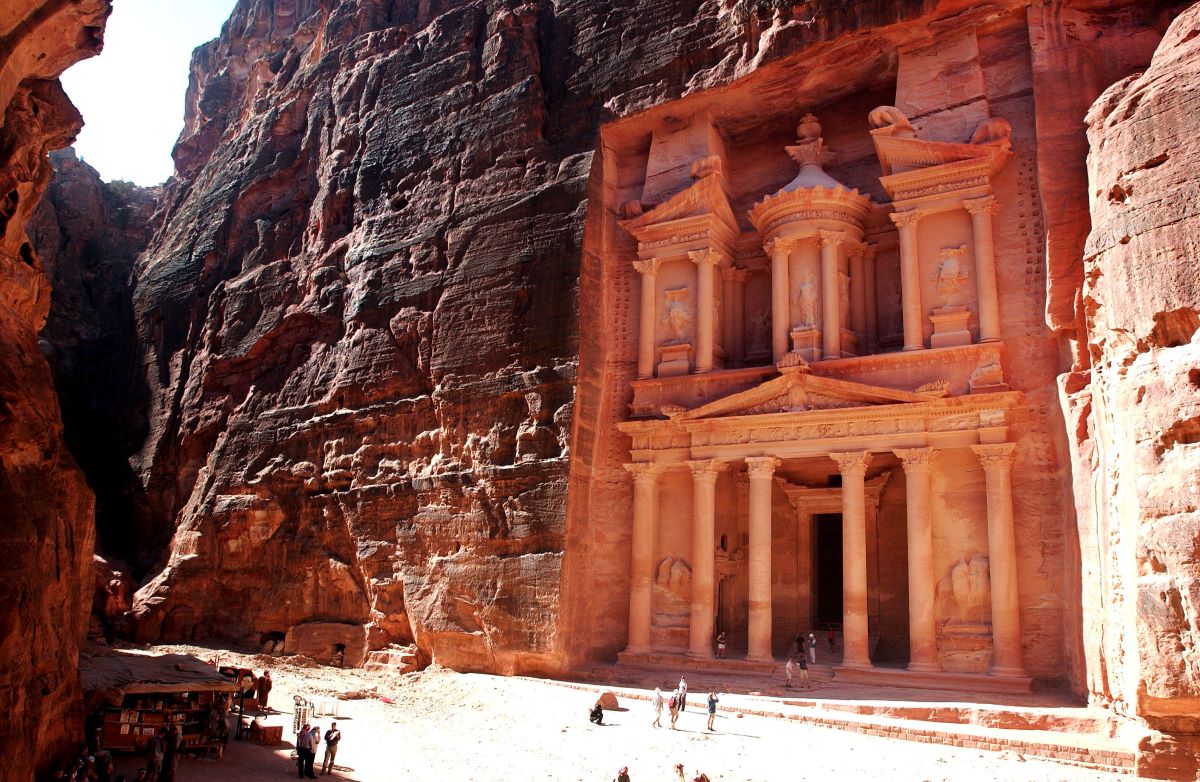At the center of the ancient city of Petra in Jordan, carved into the pink sandstone cliffs, stands the iconic monument known as the Khaznah, or the Treasury. Recently, archaeologists made a significant discovery beneath this structure—a tomb containing at least 12 human skeletons and artifacts estimated to be over 2,000 years old.
This remarkable find was led by Dr. Pearce Paul Creasman, executive director of the American Center of Research.
His team had been studying the Treasury, following years of speculation that the two tombs discovered beneath the monument’s left side in 2003 were not the only hidden chambers. This theory, however, had never been proven—until now.
Earlier this year, Creasman and his team used ground-penetrating radar, a technique that employs radar pulses to detect objects underground, to examine whether the features on the left side of the Treasury, where the earlier tombs were found, corresponded with those on the right.
The results revealed striking similarities between both sides, prompting the Jordanian government to grant permission for further excavation beneath the Treasury.
At this point, Creasman reached out to Josh Gates, host of Discovery Channel’s Expedition Unknown, sharing his excitement over the promising findings.
With a film crew in tow, the team began excavating the newly uncovered tomb in August. What they found inside was astonishing. While many tombs in Petra have been found empty or disturbed, this chamber contained complete skeletal remains and an array of grave goods made from bronze, iron, and ceramic.
This intact burial offers rare insights into the lives of the Nabataeans, the ancient Arabian nomads who ruled Petra from the 4th century BC to AD 106, according to Creasman.
“This is an extraordinarily rare discovery,” Gates said. “In the two centuries that Petra has been explored by archaeologists, nothing quite like this has been uncovered. Even in front of one of the world’s most famous buildings, there are still major discoveries to be made.”
Researchers believe this find may represent the largest collection of human remains ever unearthed in Petra. The discovery was featured on the season premiere of Expedition Unknown.

Among the artifacts discovered was a ceramic chalice, held by one of the skeletons, that resembled the shape of the Holy Grail. Gates commented, “It was one of those moments where history seems to imitate art.”
The artifacts found in the tomb are remarkably well-preserved, though the human remains are more fragile than expected, possibly due to the tomb’s humid conditions and the porous sandstone that trapped moisture, Creasman explained. Some skeletons even showed signs of mold.
Grave disturbances, which have often occurred in Petra, were likely the result of desert travelers seeking shelter, according to Creasman.
The two tombs previously discovered beneath the Treasury’s left side in 2003 contained only partial skeletal remains, and the details of those finds were never published, making it unclear how many individuals had been buried there.
“We hoped to find anything that could provide more information about the ancient people of Petra, as human remains can be incredibly valuable for this purpose,” said Creasman. “The burials in this tomb are articulated, meaning the bones haven’t been disturbed, which is exceptionally rare.”
One of the mysteries surrounding the Nabataeans is their burial practices. Some literature describes their society as more egalitarian than others of the time, with kings more closely connected to lower social classes.
However, there has been little distinction between royal and common burials in the Nabataean tombs discovered so far. It’s still unclear if the tomb beneath the Treasury was intended for royalty.
Researchers suspect that many of the textiles and jewelry typically found in Nabataean burials—such as cloth wrappings, necklaces, and beads—were lost due to the effects of humidity and flooding in the tomb.
Gates explained that further analysis of the skeletons using techniques like microscopic examination and CT scanning could reveal more about these individuals’ lives.
Creasman and his team hope to uncover more details about the skeletons, including their precise age and whether they were related. DNA analysis and other tests could help determine their diets and physical activities.
“These people must have been highly significant, given the prime location of their burial,” Gates noted. “Understanding who they were could unlock new parts of the Treasury’s history.”


